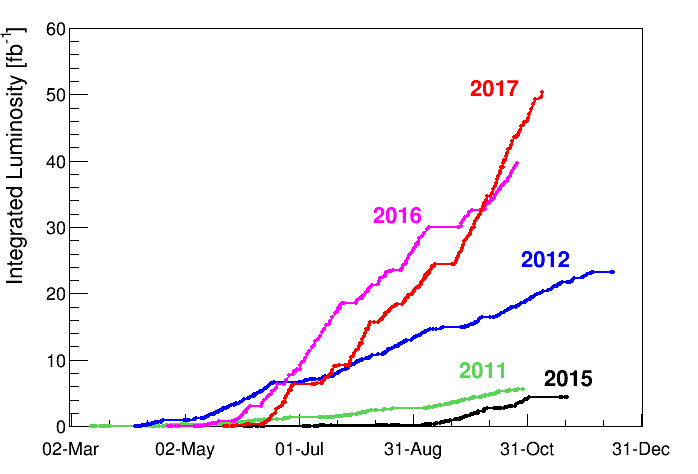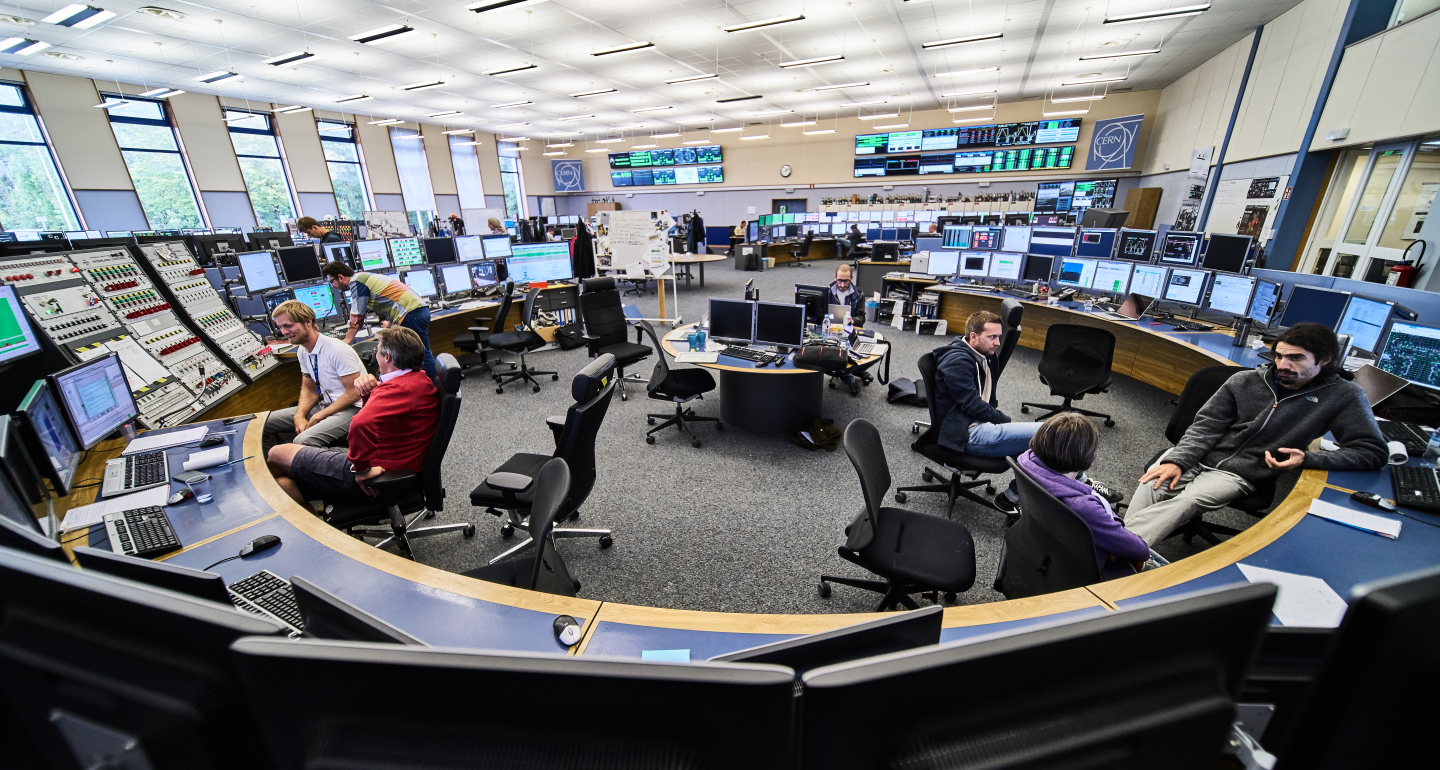On Monday, 4 December at 4.00 a.m., the accelerator operators hit the stop button on the accelerator complex and the Large Hadron Collider for their usual winter break. But while the machines are hibernating, there’s no rest for the humans, as CERN teams will be busy with all the maintenance and upgrade work required before the machines are restarted in the spring.
The LHC has ended the year with yet another luminosity record, having produced 50 inverse femtobarns of data, i.e. 5 million billion collisions, in 2017. But the accelerator hasn’t just produced lots of data for the physics programmes.
Before the technical stop, a number of new techniques for increasing the luminosity of the machine were tested. These techniques are mostly being developed for the LHC’s successor, the High-Luminosity LHC. With a planned start-up date of 2026, the High-Luminosity LHC will produce five to ten times as many collisions as the current LHC. To do this, it will be kitted out with new equipment and will use a new optics scheme, based on ATS (Achromatic Telescopic Squeezing), a configuration that was tested this year at the LHC.
Handling beams of particles is a bit like handling beams of light. In an accelerator, dipole magnets act like mirrors, guiding the beams around the bends. Quadrupole magnets act alternately like concave or convex lenses, keeping the beams in line transversally, but also and above all focusing them as much as possible at the interaction points of the experiments. Corrector magnets (hexapoles) correct chromatic aberrations (a bit like corrective lenses for astigmatism). Configuring the optics of an accelerator is all about combining the strengths of these different magnets.
One particularly efficient approach to increasing luminosity, and therefore the number of collisions, is to reduce the size of the beam at the interaction points, or in other words to compress the bunches of particles as much as possible. In the High-Luminosity LHC, more powerful quadrupole magnets with larger apertures, installed either side of the experiments, will focus the bunches before collision. However, for these magnets to be as effective as possible, the beam must first be considerably expanded: a bit like a stretching a spring as much as possible so that it retracts as much as possible. And this is where the new configuration comes in. Instead of just using the quadrupole magnets either side of the collision points, the ATS system also makes use of magnets situated further away from the experiments in the machine, transforming seven kilometres of the accelerator into a giant focusing system.

These techniques have been used in part this year at the LHC and will be used even more during future runs. “The heart of the High-Luminosity LHC is already beating in the LHC,” explains Stéphane Fartoukh, the physicist who came up with the new concept. “The latest tests, carried out last week, have once again proved the reliability of the scheme and demonstrated other potential applications, sometimes beyond our initial expectations.”
For further information:
- See the article in the Accelerating news newsletter.

